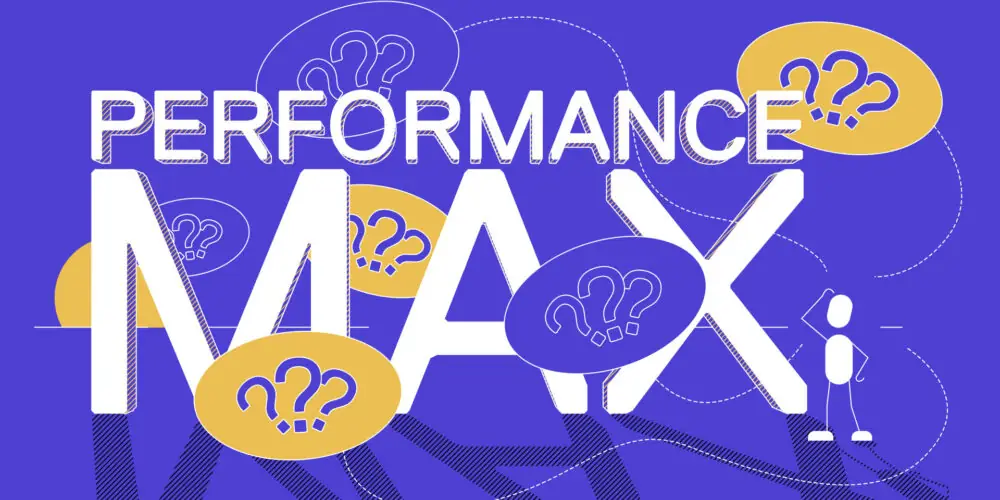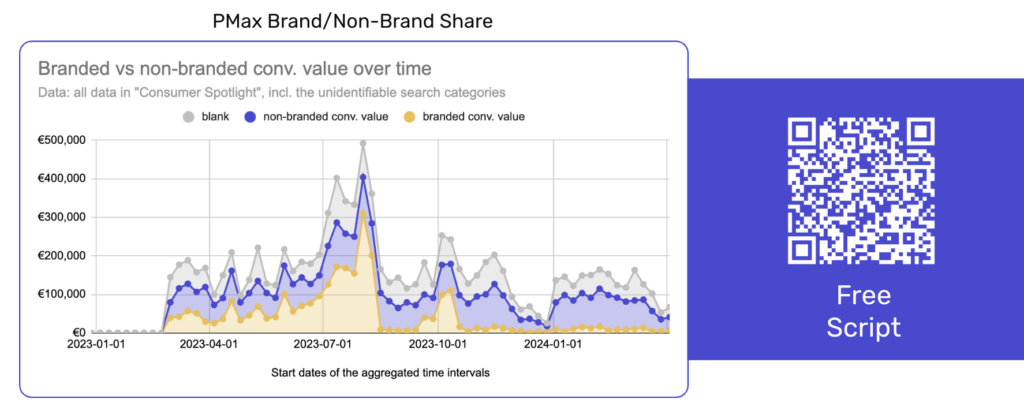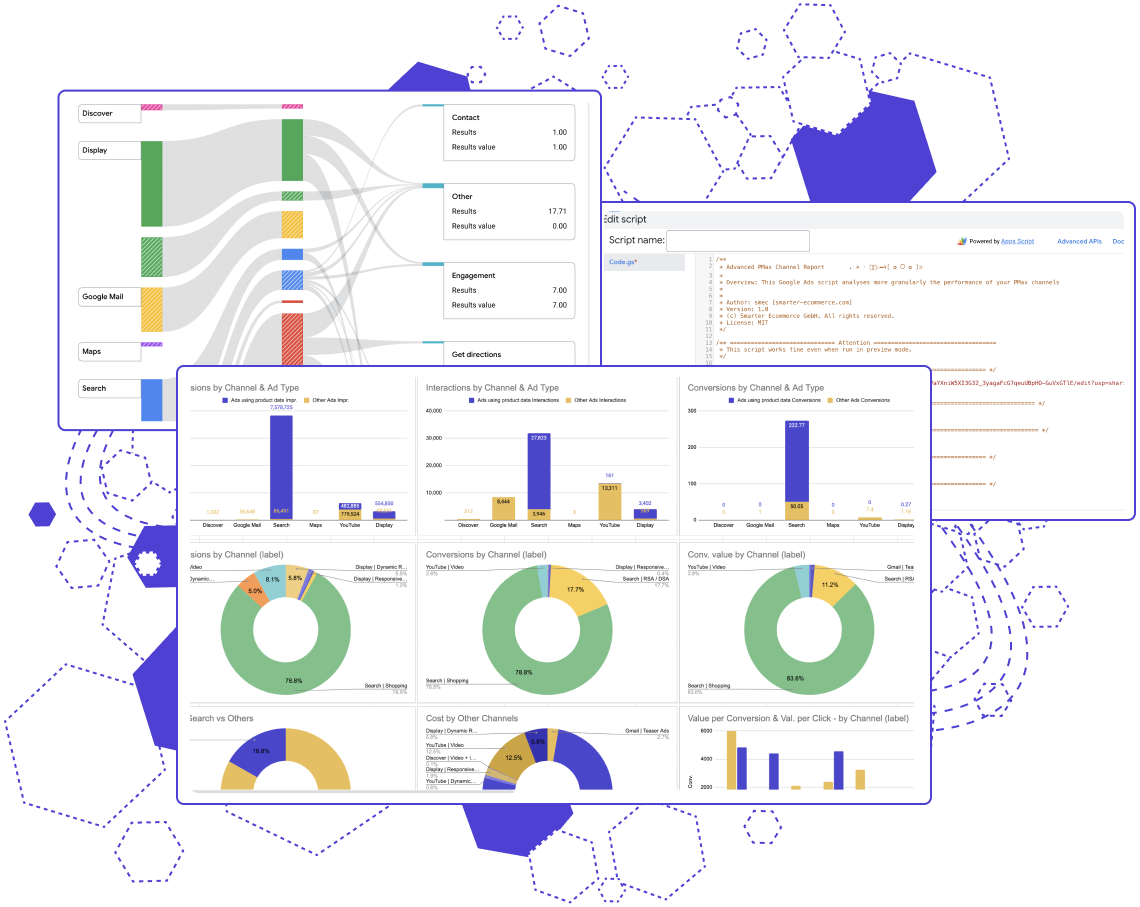Subscribe to join thousands of other ecommerce experts

It’s been three years of Performance Max. Three years of change, improvement, but also frustration. In our recent State of PMax webinar, paid search pros asked the questions that keep popping up in Slack chats, agency stand-ups, and midnight rants. And let’s be real: Google rarely gives clear answers.
So we’re doing it for them. Here’s a round-up of the spiciest unanswered Qs from our audience, answered in plain language, based on real experience.
Table of Contents
Brand exclusions, search themes & PMax targets
❔I set a brand exclusion for a PMax campaign and since then it’s flatlined. Do I need to create a new campaign so it “understands” I want to target generic terms?
No, I think PMax is quite agnostic to whether the traffic it’s pursuing is brand or generic, it primarily understands that the given search term has high potential to convert. If a large share of your conversions were branded, though, and you’ve excluded that, then this raises two possibilities:
- your monthly conversion volume has gotten a lot smaller resulting in signal loss for the AI
- or, even if you still have high conversion volume, it’s enough of a disruption to trigger a new learning period
Creating a new campaign will also result in a learning period, and will also have a dependence on conversion volume. Without knowing more details, I’d advise you to make sure you’ve given this campaign a fair shake, and double check that the ROAS target is appropriate for non-branded traffic, before starting over.
While it’s commonplace advice to exclude brand traffic from PMax, it’s wise to first check upfront how large of a change this will be, and what the tradeoffs might be. Our free PMax brand traffic analyzer can help make informed decisions.

❔What are your thoughts on search themes and brand exclusions? They haven’t worked for us. PMax still went after brand terms, even the ones we tried to negate as indicating a returning customer.
Brand exclusions have a reputation for being a bit “leaky.” The good news is that, now that campaign-level negative keywords have been released, you can use that as an extra layer of protection. This is an example where it would be really great to get more documentation from Google clarifying the exact mechanical differences between a brand exclusion and a negative keyword.
What I can tell you is that brand exclusions only apply to search and shopping traffic, and can optionally be set to only apply to search. Negative keywords are more aggressive and will apply to search, shopping, video, and display.
So if you are looking for a more “gentle” option, use brand exclusions. If you are looking for a stronger restriction, use negative keywords.
❔Have you ever seen search term reporting actually work for PMax? There’s been talk about it, but I haven’t seen it live yet.
Google has a variety of feature launch methods they use, from big bangs to regional launches, from closed pilots to percentage rollouts. My guess is that PMax search terms are a percentage rollout and will gradually become available to all accounts over weeks or potentially months.
❔What’s a use case for excluding brand in Search but allowing it for PLAs in PMax?
To your first question, many advertisers have dedicated brand search campaigns with very specific budgets, CPCs, etc that they want to monitor and control. They don’t want pMax cannibalizing that and blending it into the Plus, while it’s relatively easy to manage a branded search campaign due to keyword targeting, it can be tricky to manage a branded Shopping campaign which needs to be “sculpted” using negative keywords. That’s why for some advertisers, format-level brand exclusions can be useful.
Campaign structure & scaling
❔When structuring PMax campaigns, is it worth creating separate campaigns per objective (e.g. acquisition, awareness, performance)? For example: one for display/video, one for Shopping/generic search, and one for branded search?
I love the idea expressed here, but I feel it builds partially on a false conception that PMax is full-funnel. Many people think this, and I thought so too for the longest time. However, even according to Google, PMax is not full-funnel, it’s bottom-funnel only.
For example, if you were to try and build a display/video PMax campaign, that campaign would do some prospecting based on your audience signals and Google’s audience graph, but primarily it would live in service of remarketing. If you want to reach the upper or mid funnel, you’d need to go with classic display and video campaigns, or Demand Gen.
❔We run ~300K SKUs in six PMax campaigns. Google is pushing us to consolidate further, but many SKUs get no impressions (“zombie” SKUs). Is there a practical upper limit to how many items PMax can handle?
In theory there is no practical limit to how many items PMax can handle, and with 300,000 SKUs, you will always have longtail and zero-impression products. This is something that can be influenced but not fully resolved. PMax is primarily a demand capture channel, and for some products there will simply be little to no demand (no search volume). It would raise my eyebrows if you see products that have evidence of demand in other sales channels but not in PMax.
However, I disagree with Google’s advice to keep consolidating. It’s true that the AI benefits from higher degrees of consolidation, but this needs to balance the needs of your business. If you place all 300k items in a single campaign, with a single budget, and a single ROAS target – you are effectively telling Google that these products all matter equally to you. And furthermore, your low-demand products will be competing for budget head-to-head with high-demand products. Which ones do you think will get the budget?
You want to create an environment where every campaign has enough signal to thrive, but all your products have a fair chance to thrive as well. That likely comes through more segmentation, not less.
❔Would too many campaigns dilute conversion volume per campaign and prevent the algorithm from optimizing effectively?
Yes. Ideally – ideally! – every campaign will have 60 or more monthly conversions. If you start segmenting further than that, you need to accept the trade-off that the campaign might experience higher volatility and/or lower adherence to your goal (e.g. a ROAS target). That can be OK, as long as you have a clear “reason why” for that campaign to exist.

Every campaign will have 60 or more monthly conversions. If you start segmenting further than that, you need to accept the trade-off of higher volatility.
Audience targeting
❔Have you seen the “Bid only for new customers” option in PMax fail to exclude known users? We still see a high share of orders from existing customers vs. Standard Shopping, which works better for acquisition.
Yes. The NCO (new customers only) bidding mode is imperfect. Google will attempt to classify traffic as new or returning based on their own data, but the more first-party audience signals you can bring, the better. Still, it is not a perfectly accurate technology.
I have also seen that Standard Shopping can have a lower share of returning customers. This is most likely due to the inclusion of dynamic remarketing in PMax.
However, in my opinion, the market has pushed back too hard on warm and returning traffic. Particularly in a tight economy like today’s, I think we overestimate the loyalty of “our” customers. And the devilish thing about Google’s smart bidding is that if you don’t pursue your high-intent audience, then another advertiser will.
Food for thought!
Performance Max vs. Standard Shopping
❔Do you have insights or results from testing PMax vs. Shopping, or PMax with video assets vs. standard Video campaigns? Also curious about PMax vs. a combined stack of Shopping, Search, Display, and Video.
Yes and no. I do not really have generalizable results that I can share. However, we are highly experienced with both multi-campaign and multi-campaign-type testing, and we can support you with that. Just reach out if you need help.

❔How do you structure an account when using both Shopping and PMax? Do you split SKUs between them (e.g. PMax for newer SKUs, Shopping for older ones)?
Hybrid PMax and Shopping is relatively new (since October 2024) and needs to be done carefully.
Previously PMax had default priority. Now, ad rank is the decisive factor, and Google has confirmed that the bid setting determines ad rank. This is a bit troubling in a Smart Bidding environment where we are not actually in control of that. It implies that on average the lower ROAS target will win, but the system is non-deterministic, so, who knows?
If you’re advertising the same products, my single best advice is to keep it simple and choose which foot you want to put forward. Set meaningfully different targets and budgets. Otherwise it is far too muddy, and while Google has stated that self competition and bid escalation will not occur, I remain unconvinced.
If you choose a product split, you can broadly view PMax as more aggressive (more placements and formats) and Shopping as more incremental (no remarketing by default).
I do not personally have a favorite hybrid strategy, I actually recommend deciding on a campaign type and committing to it. I’m boring.
❔We’re testing PMax and Shopping targeting the same products. Only 12% of orders were touched by both. Based on your reporting, this suggests limited overlap—do you agree?
This is hard to answer without knowing how you measured this. But let me try. In a theoretical, simplified environment, I would expect you to have 0% single-touchpoint environment, or more real
With Search Ads now pushing headlines into sitelinks without opt-out, it feels like Google is paving the way for a “Search Max” campaign type that will claim superiority. Do you think this will follow PMax’s pattern of stealing priority from legacy campaign types?
According to the updated “How the Auction Works” doc, you pay a higher CPC for a higher chance of beating the runner-up. Doesn’t that effectively mean bid escalation is still happening, just not against yourself?
Channel mix, traffic shifts & asset-based delivery
❔Sometimes our PMax campaigns skew heavily away from PLAs. Why might that happen, and what can be done?
It’s hard to know exactly why this happens, but I’d recommend checking your Performance Max placements, and also using a channel reporting tool to understand where this volume is going.
If you are serving more on asset-based placements than in Google Shopping, the question is: are you comfortable with these placements? Does this look like good quality ad inventory? If no, you might exclude assets to create a “feed-only” campaign that will be limited to Shopping. You can then create an asset-only PMax campaign, or a Demand Gen campaign, or dedicated standard campaigns (Google Display, Search, etc). This can help you manage that large volume of asset-based traffic appropriately – if you are concerned by what you find in the PMax data.

What’s next?
Google will keep pushing automation further, that’s inevitable. But with better levers (like search terms, negative keywords, channel performance, and asset-level insights), advertisers finally have more than just a tROAS and a prayer.
If you’re willing to meet the algorithm halfway – by integrating business data, aligning product goals, and structuring campaigns intentionally – PMax can finally start doing what it promised all along: working for you.
Want to make PMax finally work for your business?
Let’s chat. We’ve helped clients like LOOKFANTASTIC, Myprotein, and Decathlon turn frustration into performance. Book a strategy call and see what it would look like to wrestle back control from the black box.
Want the full scoop? Catch the full webinar here:

